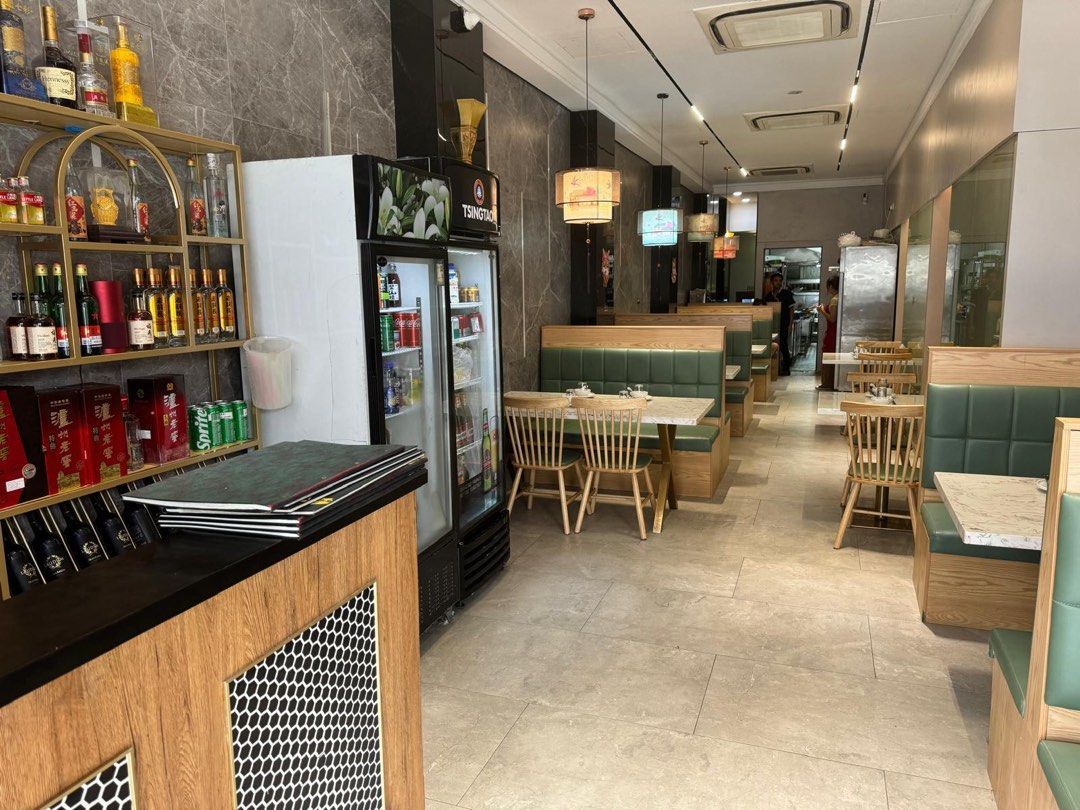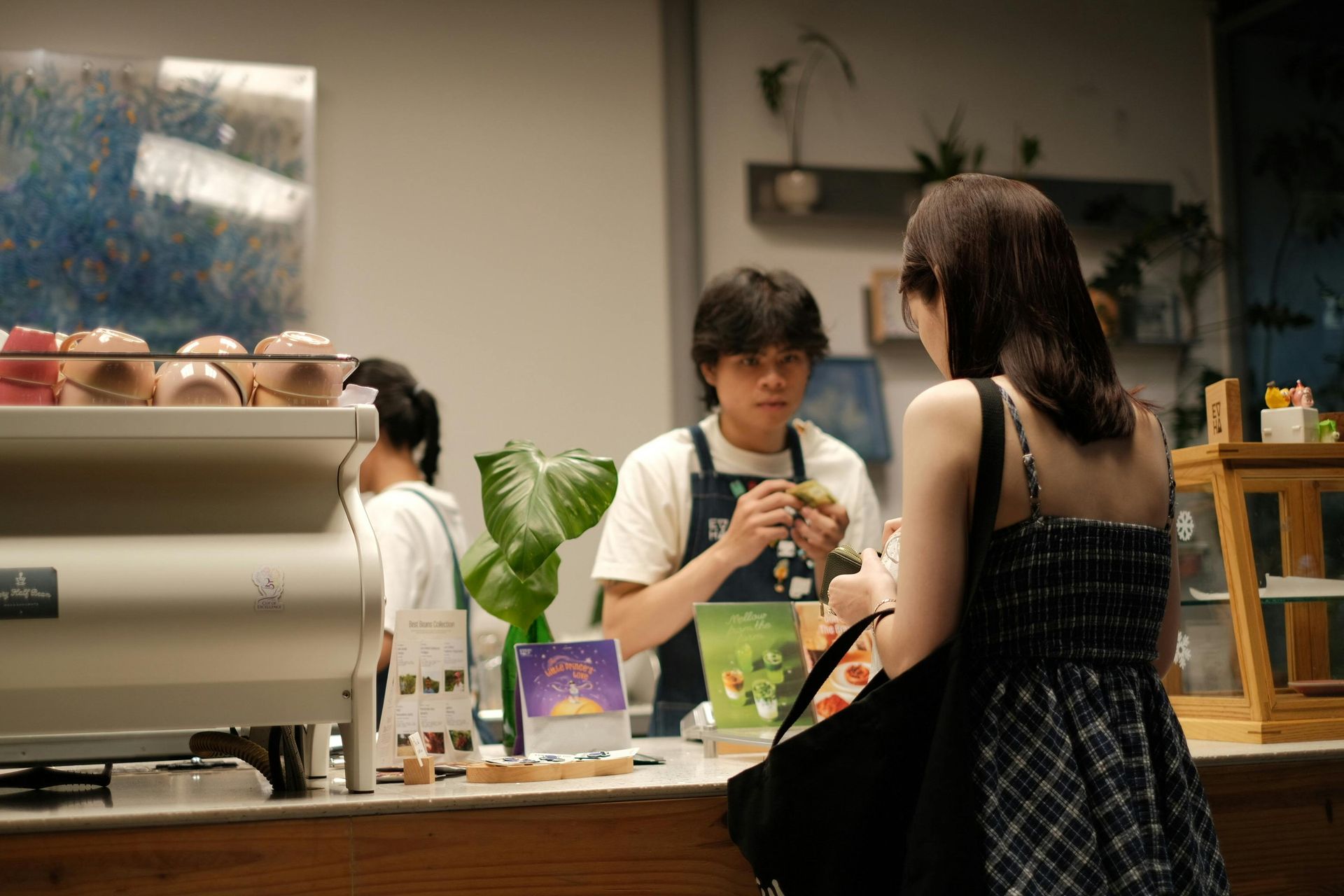Minty Customer Success

The F&B landscape in Singapore is one of the toughest in Asia. With rental costs climbing, manpower shortages, and endless competition, café and restaurant owners need smarter ways to stay ahead. One tool that’s simple, effective, and affordable? Promo codes. Promo codes aren’t just about slashing prices. Used strategically, they help you attract customers, build loyalty, boost sales during quiet hours, and even measure marketing success. Here’s how you can put promo codes to work for your outlet. Attract New Customers with Welcome Offers Customers love deals, and nothing nudges a first-time diner more than a welcome discount. Example: “WELCOME20 – Get 20% Off Your First Visit.” Benefit: This lowers the barrier of entry and encourages people to try your food. For new F&B startups, this is one of the fastest ways to build awareness and trial, especially when combined with social media ads. Turn One-Time Visitors into Regulars Promo codes linked to repeat visits create a habit loop. By rewarding diners who come back, you encourage long-term loyalty. Example: “LOYALTY10 – Get $10 Off Your 3rd Visit.” Benefit: Keeps customers engaged, driving higher lifetime value. Pair this with CRM integration to personalize rewards. For instance, give frequent diners extra perks on birthdays or anniversaries. Keep Seats Full During Off-Peak Hours Every F&B outlet has dead hours. Why let tables sit empty when promo codes can fill them? Example: “TEATIME15 – 15% Off Between 3–5 PM.” Benefit: Smooths out demand across the day, improving overall profitability. This helps maximize your rental dollars — since you’re paying for the space 24/7, why not make it work harder for you? Strengthen Delivery & Online Orders Online orders are now a must-have revenue stream. Promo codes can help shift traffic away from costly delivery platforms and onto your own channels. Example: “DIRECT5 – Save $5 When Ordering from Our Website.” Benefit: Customers enjoy savings, while you avoid high commissions. When linked with your POS, these orders integrate seamlessly into your operations, improving efficiency. Track Campaign Effectiveness with Ease Traditional promotions are hard to measure. Promo codes solve this by being fully trackable. Benefit: You’ll know which codes drove traffic, which boosted sales, and which platforms brought in customers. Impact: Marketing decisions become data-driven, reducing wasted spend. For small outlets with limited budgets, this ensures you invest only in what works. Amplify Reach with Influencer Partnerships Food influencers are powerful in Singapore’s dining scene. Promo codes make influencer campaigns more effective by giving them something tangible to share with their followers. Example: “Use Code ALEXEATS for 10% Off” shared by an Instagram food blogger. Benefit: Increases trust and traceability. You’ll know exactly how many diners came because of that influencer. This makes influencer marketing less about vanity metrics and more about measurable sales. Final Thoughts: Smarter Marketing with Promo Codes Promo codes are no longer just a gimmick. For F&B businesses, they are a practical, data-driven way to boost customer traffic, encourage repeat visits, and measure ROI. With the right F&B POS system , managing promo codes is seamless — from creating campaigns to tracking results across outlets. In a competitive market like Singapore, promo codes can give your business the edge it needs. If you are interested in getting a CRM to manage your promo codes, a POS systems, QR ordering, online ordering, self ordering kiosks, click here to enquire more.

Starting an F&B business in Singapore is exciting—but also incredibly challenging. One of the biggest hurdles? High rental costs. For café owners, hawkerpreneurs, or restaurant founders, rent can easily swallow a significant chunk of your monthly revenue. But here’s the upside: technology offers powerful tools to help you offset high operating costs while keeping your service quality high. If you’re an F&B startup wondering how to survive (and thrive) in Singapore’s competitive food scene, here are proven ways to leverage tech to fight rental pressures. 1. Choose a Strategic Location, Focus on Marketing Instead of splurging on prime locations with sky-high rents, consider a more affordable spot and reinvest your savings into marketing efforts. Lower overheads free up cash flow for advertising campaigns. Boost visibility through social media, Google ads, and collaborations with food influencers. Leverage food delivery platforms as a marketing tool—offer first-time order discounts and bundle deals to win new customers. 2. Reduce Manpower Costs with Self-Ordering Tech Manpower shortages and rising wages add extra strain to your finances. Self-ordering kiosks and QR ordering systems can: Let customers order and pay on their own Cut queues and speed up table turnover Reduce human errors in orders Allow you to run with fewer staff while maintaining fast service 3. Use Inventory Management Software to Cut Waste Food waste is silent profit leakage. By using POS-integrated inventory tools, you can: Predict demand based on sales history Order just the right amount of stock Keep storage space lean and organised 4. Boost Off-Peak Sales with Smart Pricing Don’t let your restaurant sit empty outside peak hours. Implement yield management by: Offering time-limited discounts between lunch and dinner Running loyalty rewards for off-peak visits Sending push notifications with flash deals 5. Invest in an Integrated POS System A modern POS isn’t just a cash register—it’s your command centre. Look for one that integrates with: Inventory tracking CRM loyalty programs Delivery platforms Real-time sales reporting This lets you make data-driven decisions while running leaner operations. Rental in Singapore will likely stay high for now but by adopting the right tech stack, you can operate efficiently, save costs, and keep customers coming back. Looking for F&B solutions such as an F&B POS system, QR ordering, online ordering, self ordering kiosk for your F&B business? Click here to find out more

If you're opening your first F&B outlet in Singapore, selecting the right POS system is a big step. With so many deals out there, it's easy to fall for a cheap offer. But is it the smart move? Cheap POS Systems: Short-Term Gain, Long-Term Pain While budget-friendly POS bundles may look appealing, they often come with: Fragile consumer-grade tablets Basic or outdated software No after-sales support Limited upgrades or scalability You may end up replacing them within a year — or sooner — if business picks up. Reputable POS Vendors: Built to Last Leading POS providers offer: Enterprise-grade terminals tested for daily use All-in-one systems that handle orders, payments, loyalty, and reporting Fast, reliable support – online, onsite, or WhatsApp Future-proof solutions that grow with your business Invest in Growth, Not Just Cost Savings As your operations grow, you’ll appreciate the flexibility and reliability that only a professional POS system can deliver. Get it right from the start. Choose a trusted POS vendor who understands F&B operations — not just sells software. Interested in F&B solutions? Contact us by clicking here !

In Singapore’s hyper-competitive food and beverage scene, staying connected with your customers is no longer optional—it’s essential. While email has long been the default for digital engagement, F&B businesses are now turning to WhatsApp as the go-to tool for faster, more personal communication. WhatsApp Outperforms Email Where It Matters Open rates that matter: WhatsApp boasts open rates of over 90%, compared to 25% or less for email. That means your promos are far more likely to be seen. Real-time impact: A lunch special sent at 10 a.m. can fill tables by noon—try doing that with email. Fewer steps, higher conversion: With a clean message format and a single tap to redeem vouchers or make bookings, WhatsApp converts better for time-sensitive campaigns. Email Still Has Its Place For storytelling & rich content: Want to showcase your new seasonal menu or behind-the-scenes chef interviews? Email gives you space. Loyalty and automation: Email excels at long-term nurturing, reward systems, and reactivation campaigns. Formal, official communication: Receipts, membership summaries, and full-length newsletters are still best suited for inboxes. Use Both for Best Results Launch flash sales or limited-time vouchers via WhatsApp Share loyalty points summaries, event invites, or reservation confirmations via email Use an integrated F&B POS & CRM solution like MEGAPOS to automate and track both in one place Conclusion Smart F&B chains in Singapore are already using WhatsApp to fill tables, boost voucher redemptions, and stay top-of-mind. Don’t just rely on email alone—diversify your outreach and engage your customers where they are most active. If you are interested in exploring using WhatsApp as a channel for your members engagement campaigns, click here to find out more!

Singapore's F&B industry has rapidly embraced technology—from QR ordering systems to delivery app integrations and self-service kiosks. But one thing has remained consistent: the Point-of-Sale (POS) system is still the operational hub of every restaurant or café. In a tech-driven landscape where automation is often seen as the solution to rising labour costs and competitive pressure, POS systems have not become obsolete. Instead, they've evolved into more powerful, cloud-connected hubs that support various customer touchpoints and internal workflows. Evolution of POS in Singapore Legacy POS: Cash register-based systems that only supported basic billing. Touchscreen Terminals: Provided real-time inventory tracking and digital receipts. Cloud POS Systems: Enabled multi-outlet management, QR ordering, and CRM integration. Today, modern POS systems are API-friendly, mobile-responsive, and integrate effortlessly with Singapore's payment infrastructure including NETS, PayNow, and mobile wallets. Why POS Systems Are Still Essential Omni-Channel Sales Handling POS systems now consolidate orders from dine-in, QR, online delivery, and kiosks into a single dashboard. Singapore-Ready Payments Seamless support for e-wallets, NETS, and card payments means faster checkouts. CRM Integration Run membership programs, automate voucher issuance, and encourage customer retention. Data-Driven Operations Generate real-time sales reports, GST summaries, and staff performance reviews across multiple outlets. A Smart Business Backbone From small hawker stalls to established franchises in Singapore, the POS system is no longer just a cash register. It’s a smart business backbone that enables growth, enhances customer experience, and reduces inefficiencies. If you're looking to digitalize your F&B business, make sure you start with a reliable POS system. Click here to contact us and find out more!

Whether you're managing a boutique cafe in Tiong Bahru or a fast-paced restaurant chain in the CBD, your POS system is central to your success. It’s not just a cash register—it’s your operations hub. Below are the most powerful POS features every F&B manager should be taking full advantage of: 1. Live Sales Reporting Real-time sales dashboards allow managers to make fast, informed decisions. See what’s selling, when your rush hours are, and how much revenue each staff member generates. Whether it’s adjusting your menu or planning your next promo, the data is at your fingertips. 2. Automated Inventory Control Track ingredients and stock across shifts without manual spreadsheets. Each transaction updates inventory counts in real-time, which means fewer stockouts, better forecasting, and reduced wastage—especially critical for kitchens with fresh produce or high food cost items. 3. Integrated QR & Cashless Payments Speed and safety are key in the F&B space. With built-in QR ordering and contactless payment options, your customers can browse the menu, order, and pay—all from their mobile phone. It’s efficient, hygienic, and perfect for cafes with limited staff. 4. Staff Management Tools From clock-ins and shift logs to sales performance, a modern restaurant POS system should include comprehensive staff tracking. Use this data to monitor productivity, reduce time theft, and make informed rostering decisions. 5. Built-in CRM & Promotions Engine Offer loyalty points, auto-discounts, and personalised birthday treats through your POS system. This drives repeat business and improves customer satisfaction, especially for Singapore diners who love rewards and value. 6. Multi-Branch Synchronisation If you're running a chain or planning to expand, you’ll need a POS for multiple outlets . Sync sales, stock, and reporting across locations so HQ can manage from a single backend while giving outlet managers branch-level control. 7. Kitchen Display & Delivery App Integration A POS that connects directly to kitchen displays and delivery apps saves time and avoids double-entry errors. When a customer places an online order, it goes straight to the kitchen—no delay, no miscommunication, no chaos. Conclusion Today’s F&B POS systems are more powerful than ever. With us, you’re not just getting a payment solution—you’re getting a fully integrated restaurant management tool that helps you grow and operate smarter. Explore our solutions by getting in touch —perfect for cafes, cloud kitchens, restaurants, kiosks, and growing F&B chains.

A Successful F&B outlet in Singapore does more than serving good food, it’s about knowing your numbers, too. With the right F&B POS system, real-time sales reporting can drive smarter, faster business decisions that keep you ahead of the competition. 1. Make Smarter Purchasing Decisions Real-time data from your POS system reveals which dishes sell well and which don’t. This insight helps you cut food waste, avoid overstocking, and negotiate better deals with suppliers. 2. Monitor Multiple Locations from Anywhere For F&B chains, real-time reporting means managers can track sales and performance across outlets remotely. No more waiting for manual reports or daily closing summaries. 3. Boost Staff Accountability and Productivity A modern restaurant POS lets you see staff sales in real time. This helps spot top performers and provides opportunities for quick coaching, ensuring every team member contributes to outlet targets. 4. Adapt to Customer Demand Instantly Spikes in demand? Real-time reports help you adjust manpower, promotions, and kitchen prep on the fly—maximising sales during peak periods. Whether you operate a single outlet or an F&B chain, real-time sales reporting through a reliable POS system empowers you to run leaner, faster, and more profitably. Want to unlock these insights for your business? Click here to find out more about how our POS & CRM solutions can help!

For every restaurant, cafe, or food stall in Singapore, handling customer complaints is an essential part of service quality. Even the best F&B businesses will face unhappy diners—but the real test is how your team responds. Here is a concise guide on how to manage difficult customers professionally : 1. Respond Calmly and Professionally When a customer raises an issue—whether about food quality, waiting time, or service—remain calm. Use polite phrases like “Thank you for letting us know” to ease tension. 2. Resolve the Issue Quickly Empower staff to offer instant solutions: food replacement, a small free drink, or loyalty points via your POS/CRM system to turn dissatisfaction into goodwill. 3. Never Ignore Online Reviews Handle Google and GrabFood reviews swiftly. Apologize, clarify, and offer offline resolution. 4. Train & Equip Staff Use digital SOP guides or in-app staff reminders to maintain service consistency—even during busy hours. Why Good Handling Boosts Business ✔ Avoids bad Google reviews ✔ Retains customers post-complaint ✔ Builds a trusted brand image

In Singapore’s competitive F&B market, having a strong presence on Google is essential for attracting new customers. Whether you run a coffee kiosk, a casual eatery, or a full-service restaurant, Google Reviews can directly influence foot traffic, trust, and even delivery platform choices. Here are some proven strategies to help you gather more authentic Google Reviews —the right way. 1. Make It Effortless with QR Codes Set up QR codes on tables, receipts, or takeaway packaging that link directly to your Google review page. Customers are more likely to leave a review when the process is quick and simple. 2. Ask Customers Personally A polite reminder from your staff can go a long way. When customers compliment the food or service, gently invite them to leave a review on Google. 3. Send Post-Visit Reminders If you collect customer details via reservations or QR ordering, send a thank-you SMS or WhatsApp message after their visit, along with your Google review link. 4. Respond to All Reviews Engage with every review—good or bad. This shows potential customers that your business values feedback and continuous improvement. 5. Offer a Token of Appreciation Encourage reviews by offering small incentives like discounts on the next visit or loyalty points, without demanding only positive reviews (in line with Google’s policies). 6. Highlight Reviews on Social Media Showcase your best reviews on Instagram or Facebook to motivate others to share their experiences too. Why Google Reviews Matter for Singapore F&B Owners ✔ Improves your ranking on Google Maps searches like “best cafe in Singapore” ✔ Builds trust among locals and tourists alike ✔ Influences decisions on delivery apps like GrabFood and Deliveroo ✔ Drives more walk-in customers from nearby areas Final Thoughts Growing your Google Reviews is not about shortcuts or fake posts—it’s about creating great experiences and making it easy for real customers to share them. With consistent effort, your restaurant, cafe, or food stall can build a strong online reputation that pays off in visibility and revenue. If you are looking for a POS system , self ordering kiosk , QR ordering or a CRM solution for your F&B business, we have it all! Click here contact us and find out more

